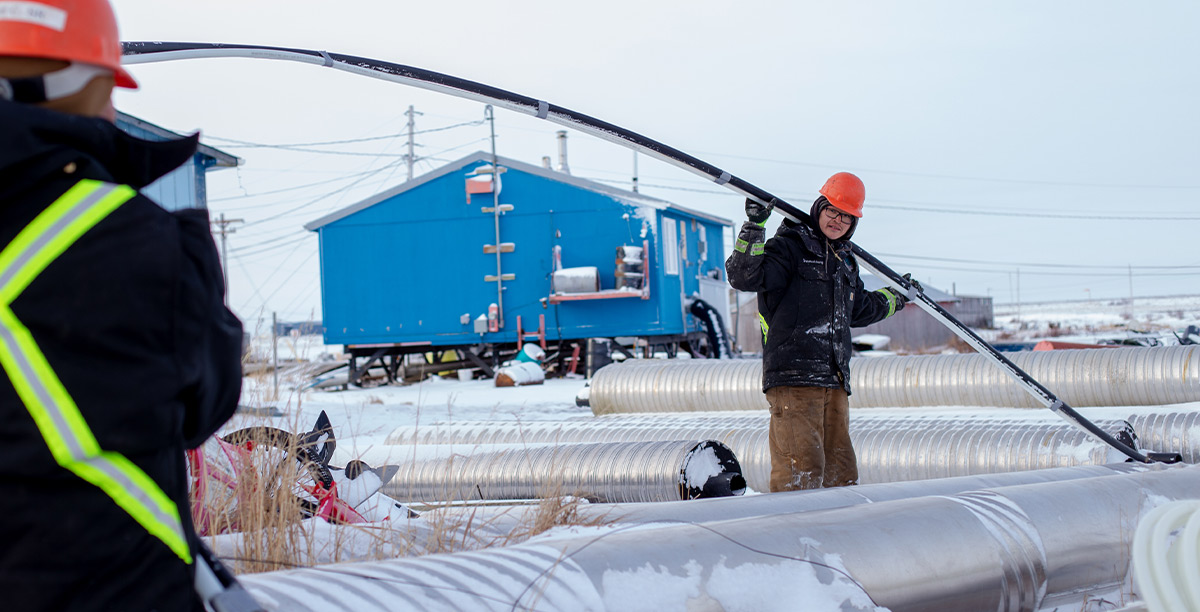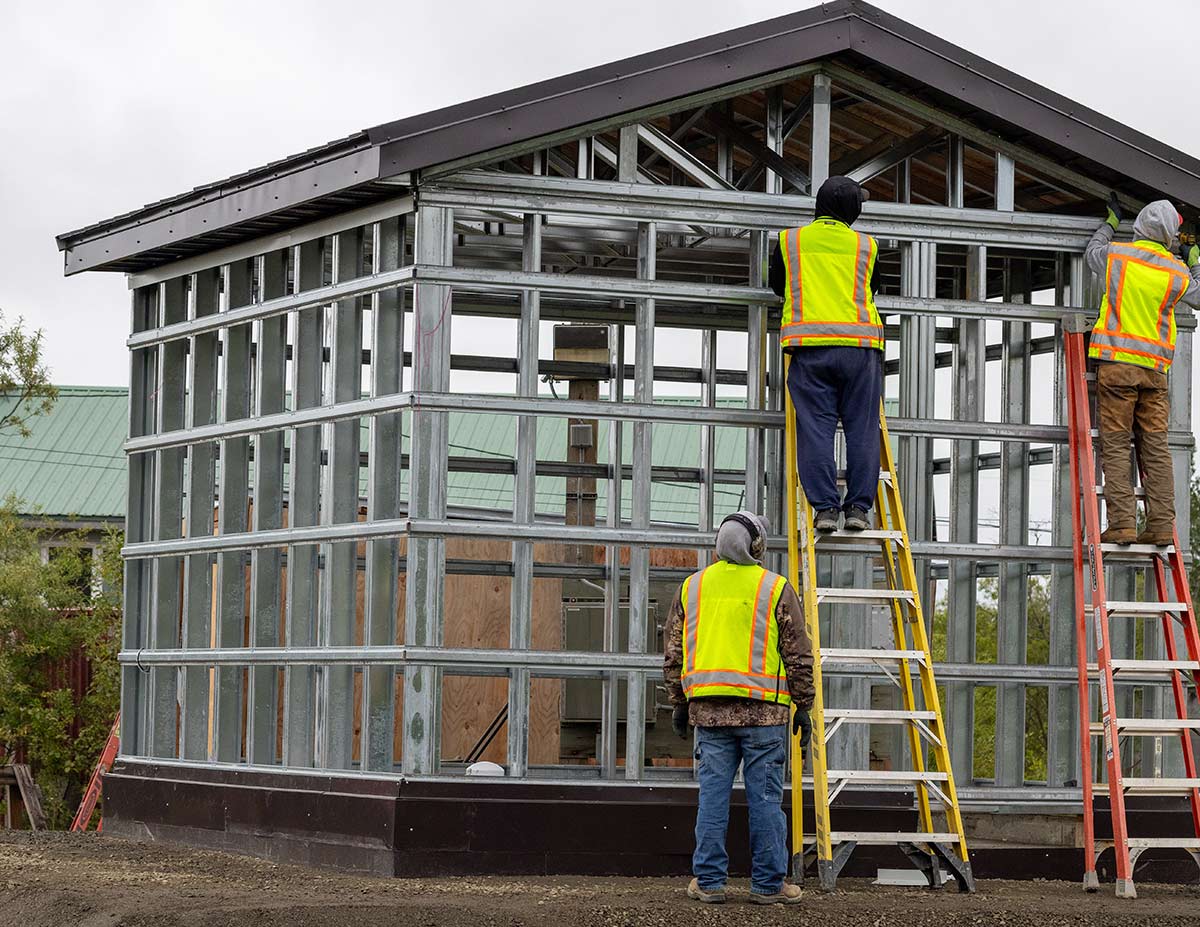

Photo provided by Ken Graham



Photo provided by Ken Graham
laska Native Tribal Health Consortium, or ANTHC, has an ambitious vision: to make Alaska Native people the healthiest in the world.
As a non-profit tribal health organization, ANTHC provides several world-class health programs and services. ANTHC’s Division of Environmental Health and Engineering, or DEHE, plays a significant role in creating healthy homes by ensuring that communities have access to safe, reliable, and sustainable water and sanitation.
With funding secured through the federal Infrastructure Investment and Jobs Act, or IIJA, ANTHC is beginning the process to build community water and sewer systems that will serve more than 2,000 homes in more than twenty-four communities. However, ANTHC leaders know accomplishing such a large vision requires a team effort.
“It’s a big endeavor to serve the unserved and underserved,” says Jerod Jones, director of project operations. “We can’t complete all the work ourselves.”
Formed in 1998, ANTHC is the largest, most comprehensive tribal health organization in the US. It’s also Alaska’s second-largest health employer, with more than 3,000 employees. The consortium takes a multi-disciplined approach to health and wellness for Alaska Natives throughout the state. In addition to health and medical services, ANTHC focuses on prevention, research and data, medical technology, advocacy, and education. Through its environmental health and engineering team, ANTHC takes an active role in updating aging water and sanitation facilities and, in some cases, building new facilities in remote communities that completely lack system-wide plumbing.
“In communities without in-home plumbing, infants are five times more likely to be hospitalized with RSV and eleven times more likely to be hospitalized due to pneumonia compared to communities with piped water and sewer,” says David Beveridge, vice president of Environmental Health and Engineering, at ANTHC. “COVID really highlighted the need for safe water to clean and wash hands. IIJA funding allows us to deliver that.”

Because of this funding, many rural communities will receive in-home running water and sewer for the first time. In Akiachak, for example, only half of the homes had running water until recently. Over the past few years, ANTHC has worked to upgrade the water facility and connect pipes to the remaining 100 homes in need of running water and sewer services. In the 90s, the western part of the community was connected to the water facility, while the eastern side hauled water and relied on honey buckets dumped at residential collection points. Last summer, the last of the remaining homes were able to turn on their faucets for the first time.
Vice President of Environmental Health and Engineering, Alaska Native Tribal Health Consortium
Also in the works is a project in Stebbins, with a population of about 550, to build a community-wide piped water distribution and wastewater collection system that replaces the need to haul water, use honey buckets, or solely rely on the washeteria. Richard Wooten, contract delivery team manager for ANTHC, says outfitting the community with in-home plumbing for the first time will require a high level of collaboration from everyone involved.
“We need to work together to ensure that we develop the project in a way that best serves the community,” says Wooten.

Director of Project Operations, Alaska Native Tribal Health Consortium
ANTHC has been an AGC member since May 2010. Jones says ANTHC frequently uses AGC’s plans room and appreciates access to AK-CESCL training for its field personnel. Wooten says networking with other AGC members is a big plus when identifying companies for future collaborations. Jones says he hopes that some of the future collaborations include a few IIJA-funded Legacy List projects.